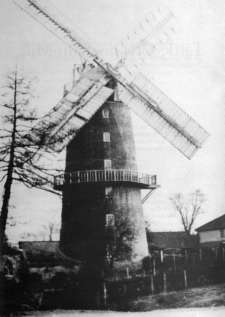 |
|
c.1905 |
| Little Cressingham towermill Watton Brook |
 |
|
c.1905 |
|
Little Cressingham Mill is on a Domesday site, as 2 mills were listed in the parish at that time. Little Cressingham mill was rebuilt in 1821 and despite its dual power source, this was only a small mill. The watermill was a single storey brick building with a slate roof that housed an iron breast-shot water wheel, 12 feet in diameter and 6 feet wide. The windmill was a six storey 50ft tower mill that housed two pairs of wind powered stones in the upper storeys and another two pairs of stones in the lower section driven by the water wheel. |
Little Cressingham mill was a rare combination of a wind and watermill working together. The only other Norfolk examples are Burnham Overy Union mills and Thurning mill. |
The pale grey brick 50ft high, six storey tower was built c.1821 and had four patent sails, each with 8 bays of 3 shutters. The boat shaped cap had a petticoat, gallery and a six bladed fantail. A wooden reefing stage was built around the third floor, which was the meal floor and contained the elegantly stop-chamfered lower section of the upright shaft. A wooden clasp-arm spur wheel underdrove one pair of peak and one pair of French burr stones on the floor above. The wallower was probably the smallest in the county with only 26 teeth - as opposed to the 72 teeth giant at Old_Buckenham_towermill. Another left-handed pair of each type of stone were installed on the first floor and were underdriven by an oil engine or the iron breast-shot water wheel that was 12 feet in diameter and 6 feet wide. An oat crusher on the second floor was also water-powered. A Tattershall Half-sack Midget Mill and a wheat cleaner were also used. |
One pair of sails was lost in 1911 and then in 1916 severe tailwinding cost the windmill its commercial life, as it was damaged beyond repair. When the sails were finally removed in about 1920, one pair was reinstalled on Carbrooke towermill. The cap, stage and top machinery were removed in about 1940. |
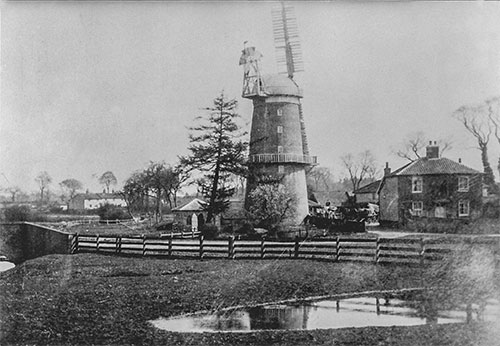 |
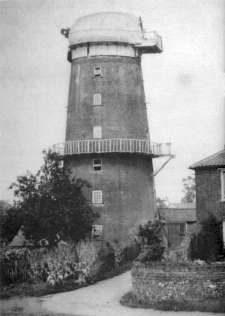 |
|
c.1914 |
c.1925 |
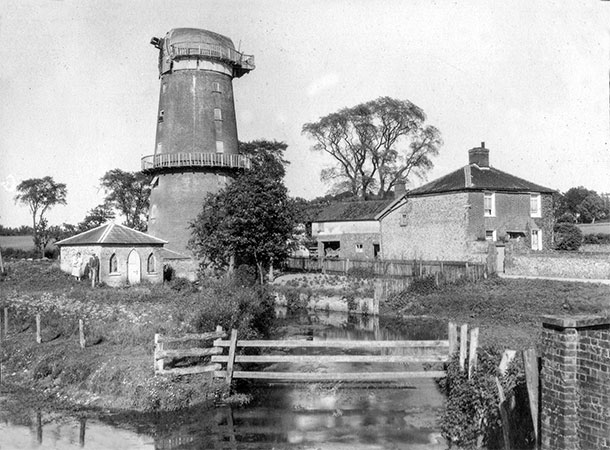 |
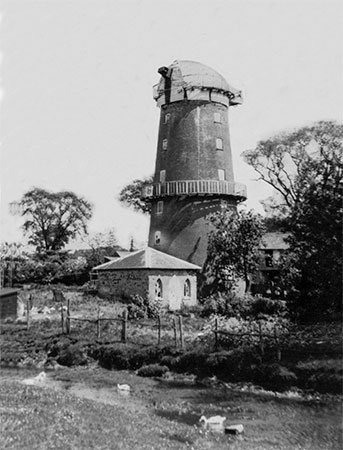 |
|
c.1926 |
c.1926 |
In 1780 the watermill was running on its own as the windmill had not yet been built although a smockmill had recently been built nearby, opposite the White Horse pub. The watermill and the smockmill were advertised for sale in the Norfolk Chronicle of 16th February 1782. The combined structure was built in 1821. |
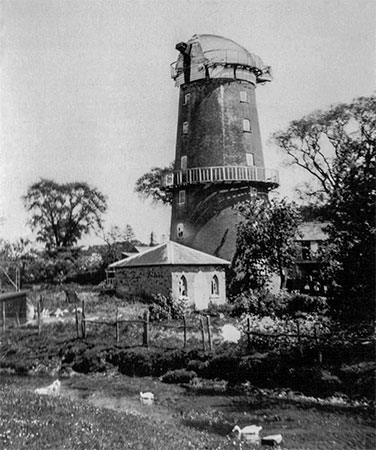 |
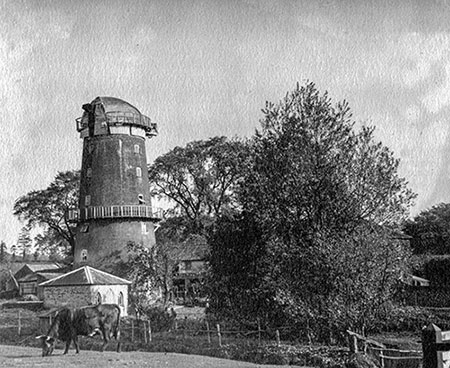 |
28th May 1939 |
Autumn 1940 |
My father (Bertram Charles Whittle) took a photo of the mill in autumn 1940 when he was a reconnaissance photographer for the RAF at Watton during WWII. I was scanning some of his photos from the war (a large collection) and thought you might like this one. |
c.1940 the cap and machinery down to the top section of the upright shaft were removed and a flat concrete roof was constructed. Unfortunately, the slab designed to cover the access hole to the roof above the sack hoist was never put in place and over the years rainwater penetrated to the ground floor, rotting the wooden timbers all the way down. |
c.1940 the cap and machinery down to the top section of the upright shaft were removed and a flat concrete roof was constructed. Unfortunately, the slab designed to cover the access hole to the roof above the sack hoist was never put in place and over the years rainwater penetrated to the ground floor, rotting the wooden timbers all the way down. |
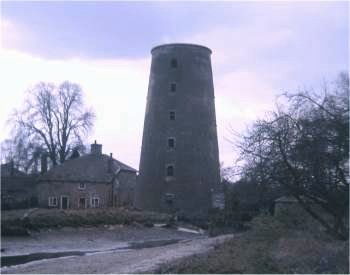 |
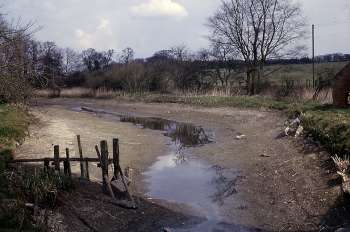 |
|
Mill dam April 1967 |
April 1967 |
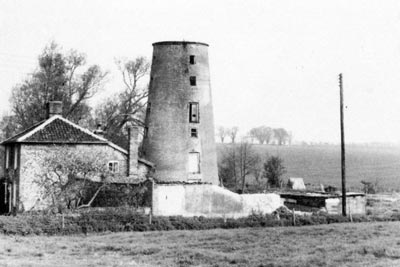 |
20th May 1978 |
To be LETT, or SOLD, at Little Cretlingham, a WIND-MILL, new built, for Bag Work. |
|
To be Sold, or Lett, and entered upon immediately, a Water-Mill and Wind-Mill, with six Acres of Land, in Little Cressingham, in Norfolk, within two Miles of Watton, and six of Swaffham. For Particulars enquire of Mr_Brown, Millwright, in Ber-street, Norwich, or of Mr William Trundle, at the Mill, in Little Cressingham aforesaid.
Norfolk Chronicle - 16th February 1782 |
It would appear that William Trundle, owner of the mill had moved to Necton, probably during 1782 and that he had not managed to sell the mills over the course of the year. |
To be Sold, or Lett, (And entered upon immediately) |
A Water-Mill and Windmill, with a new House adjoining, together with six Acres of exceeding good Land, Part Freehold, Part Copyhold, with a Right of Common thereunto belonging, situate in Little Cressingham, in the County of Norfolk. -- Cressingham is within two Miles of Watton, and six of Swaffham. For further Particulars enquire of Mr TRUNDLE, of Necton, the Owner,
Mr John FARROW, in Little Cressingham aforesaid, who will shew the Premises, or of William TOWNSHEND, Attorney, Downham, Norfolk. Norfolk Chronicle - 22nd February 1783 |
To be SOLD |
For further Particulars enquire of William Trundle, in Necton.
N.B. Any Perfon inclinable to enter into Partnerfhip in the Trade, he will be inftructed in the Bufinefs.
Norfolk Chronicle - 28th June 1783 |
|
To be Sold by Auction By W. PARSON In three Lots On Wednesday November 4, 1795 at 3 o'c At the Crown Inn, Watton, Norfolk, Unless sooner disposed of by Private Contract |
Lot 1. A Water Corn Mill, Dwelling house, baking office, outhouses, yards & garden, with two Common Rights, situate at Little Cressingham, in the occupation of Mr. J. Pearson, the Owner, who will shew the premises. Lot 2. A Tower Windmill & about half an acre of land situated near the above mentioned Lot. Lot 3. A cottage in excellent repair, with two enclosures of exceedingly good arable Land containing about four acres situate at Cressingham aforesaid. Immediate Possession of all the premises may be had as the owner wishes to retire from the business on account of his ill health. Apply to Mr. Pearson on the premises or to the Auctioneer at Attleborough Bear. Norfolk Chronicle - 31st October 1795 |
| Thomas Norman wrote his will on 24th August 1816 and was buried a week later on 31st August 1816. He left the Cressingham mills to his son Robert and Harpley towermill to his son William. Thomas Norman's will was proved on 26th February 1817. |
Tithe Award 1845 |
||||
| No. 266 | Mill, house, garden etc | Pasture | 1a. 0r. 33p. | Pt. of £21.13.11 |
| Notice to Debtors & Creditors of Benjamin Henry Land deceased. Miller & farmer. Executrix Mrs. Caroline Land. Norfolk Chronicle - 24th December 1853 |
... the notable wind & watermill of Little Cressingham, now strictly speaking a watermill, for the huge yellow-brick tower with white balustraded gallery has lost its sails. In Search of Windmills - Hokins & Freese - 1931 |
c.1972 the millpond and part of the river that had been bypassed with a new channel, was filled in. In 1975, the outbuildings constructed of clay lump and flint were demolished. |
In the 1980s Harry Apling queried as to whether the upright shaft, spur wheel, bridge trees and other white painted timbers from the earlier smockmill were reused during the construction of the combined water and towermills. |
|
Sale Particulars of Clermont Lodge in Great and Little Cressingham & Threxton, 1844 by Messrs. DRIVER At the Auction Mart, Bartholomew Lane, London on Friday 19th July 1844 at 12 o'c in One Lot. MILL & PREMISES |
|
In the occupation of Mr. John MARSH at the Annual Rent of £155 - 16 - 0 |
| On Christmas day 1890 the miller, Samuel Goddard and his wife Elizabeth, took a bucket of coals up to their room to try and keep warm. Sadly they were suffocated by the smoke and were found the following day. They were aged 36 and 37. |
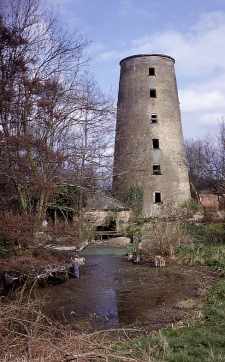 |
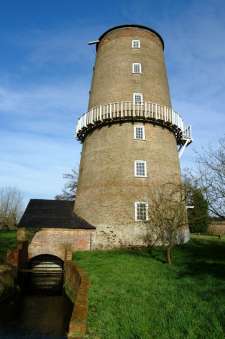 |
|
Tailrace April 1967 |
Tailrace March 2003 |
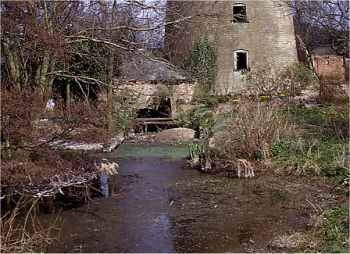 |
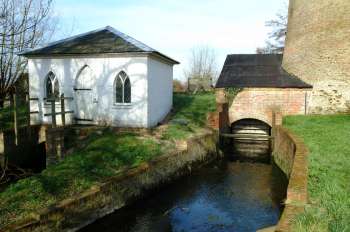 |
|
Wheelhouse April 1967 |
Pump house and wheelhouse March 2003 |
A Blackstone mill with vertical stones was installed in the cart shed in 1908, it was powered by a portable steam engine in the yard and was mentioned in Kelly's of 1928. This shed along with others were demolished in 1975, the Blackstone mill having been superseded by a Victorian single cylinder paraffin engine that was geared to the watermill's stones in times of insufficient water. |
In 1910 a Tattershall Roller Mill was installed and used intermittently until 1952 when the mill ceased operating. |
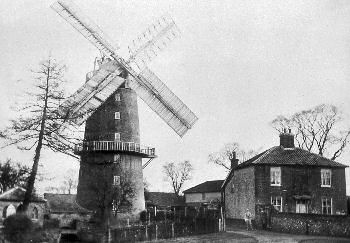 |
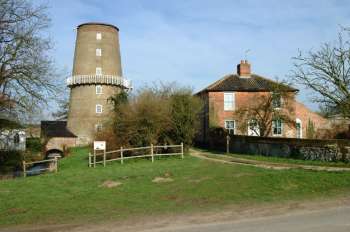 |
|
c.1905 |
9th March 2003 |
|
The windmill lost one pair of sails in 1911 and then in 1916 severe tailwinding cost the windmill its commercial life, as it was damaged beyond repair. When the sails were finally removed in about 1920, one pair was reinstalled on Carbrooke_towermill. The cap, stage and top machinery were removed in about 1940. However, the watermill section using its iron 12 foot diameter by 6 foot wide breastshot wheel, supplemented by the paraffin engine, continued to grind corn for local farms until the early 1950s. In 1918, at a cost of £400, a Tatterhall half sack roller plant was installed and powered by the paraffin engine. |
After commercial milling ceased in 1952, the mill dam continued to supply water for Claremont Hall gardens using a second smaller 8' x 3' waterwheel that drove a c.1800 Bramah pump that was housed in a separate pump house to the side. Eventually this arrangement was replaced by two more powerful hydraulic rams made by Green & Carter of Winchester. The first was installed in 1934 and the second in 1935. Dredging in the 1960s robbed the mill of sufficient water to turn the wheel. |
On 30th August 1972 Horace Freestone of Hilborough wrote to Harry Apling to say that he had formerly been at Little Cressingham Mill and also Hilborough Watermill. |
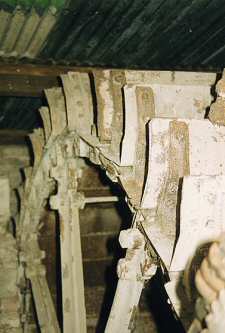 |
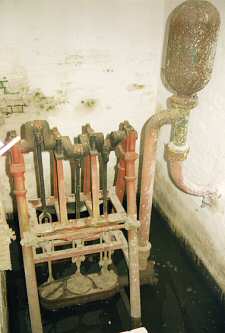 |
|
Pump wheel February 1990 |
The 3 ram Bramah pump February 1990 |
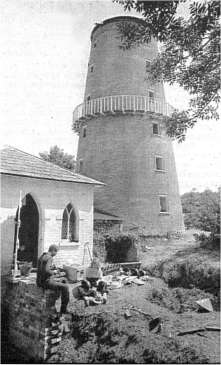 |
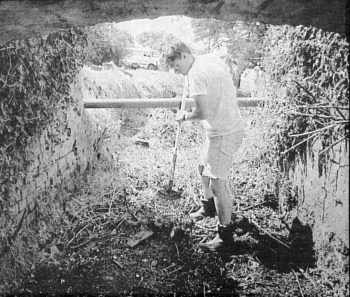 |
|
Restoration work in August 1990 |
Clearing the old water channel in August 1990 |
|
Norfolk Historic Buildings Trust and the Norfolk Windmills Trust took over Little Cressingham Mill for a restoration project on 8th July 1981. As the machinery was basically intact, their aim was to bring it back to working order once more and able to provide grinding demonstrations. The building is Grade II listed. |
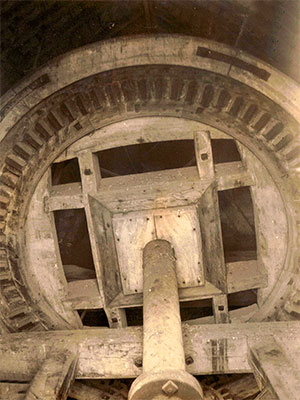 |
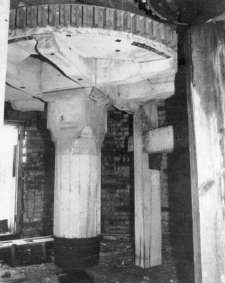 |
|
Brakewheel c.1926 |
Windmill spur wheel c.1981 |
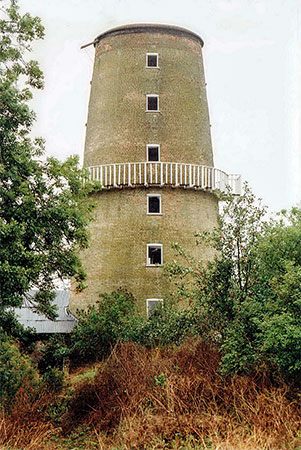 |
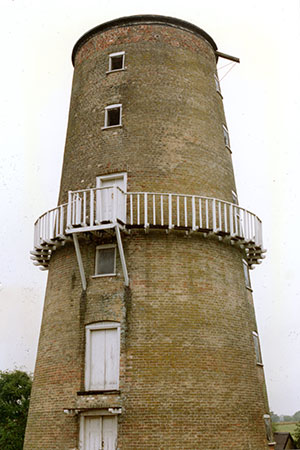 |
|
1989 |
1989 |
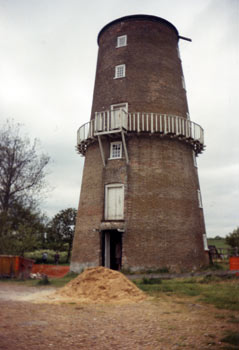 |
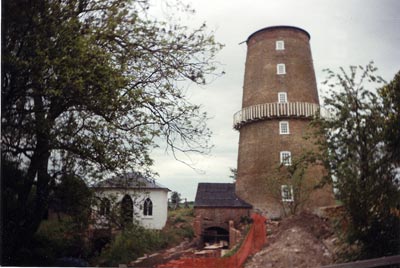 |
May 1993 |
May 1993 |
In the 1980s Harry Apling queried as to whether the upright shaft, spur wheel, bridge trees and other white painted timbers from the earlier smockmill were reused during the construction of the combined water and towermills. |
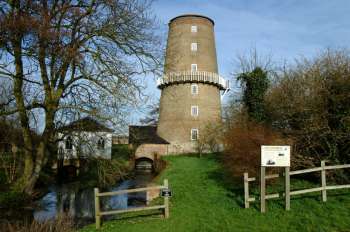 |
|
As restored by Norfolk Windmills Trust March 2003 |
The Norfolk Windmills Trust is pleased to announce that they will soon be commencing work on the restoration of a unique combined Wind and Watermill at Little Cressingham, near Watton in south-west Norfolk. The Chairman of the Trust, Mr. A. G. Hodges, will mark the occasion at 10.00 a.m. on Wednesday the 8th of July, 1981, when he receives the keys fom Mr. J. E. Davies, the owner, who is letting the mill at a peppercorn rent to enable the Trust to embark upon its restoration. The ceremony will be held at the mill. Press Release - 1981 |
|
Young shoulders to wheel at mill |
There was much splashing, wading and mudlarking at Little Cressingham yesterday - all to help restore a unique 19th century mill. Little Cressingham mill is thought to be the only combined wind and water mill, certainly in Norfolk and probably in Britain, and it is being restored by the Norfolk Windmill Trust with the help of yopungsters on the Duke of Edinburgh gold award scheme. The youngsters are all former Wayland High School pupils and all come from around the Watton area. They are being supervised by Mr. Tim Leonard who said they were helping to dig out the mill pond and restore the mill's watercourse - work which involved a lot of wading through mud and weed. "Part of their award involves doing some for of commuity work," said Mr. Leonard. "These youngsters have decided to do about 60 hours work on helping to clear out the watercourse for the mill." The mud clearers, Michael Smith, Ian Soame, Harvey Pledger, Ian Timms, Fiona McNeil, Natalie Adcock, Anthea Lowry, Neil Barber, Michael Barnes, and Dawn Coughlan started at the mill lst Sunday and will put in a 10 to 4 day there once a month. Apart from clearing tons of mud, slime and weed, the youngsters are helping to restore an ancient water wheel and pump built in the easrly 19th century by Bramah of London. Little Cressingham mill was built about 1821 and was used by local millers until 1916 when it stopped working. The sails were taken down around 1920 but the mill still ran of water power until 1952. The Norfolk Windmill Trust took over the property in July 1981 with the intention of restoring it to full working order. Yesterday was the first public open day at the mill and visitors had the chance to see the workings of the ancient building. Eastern Daily Press - Monday 18th October 1982 |
I used to live with my parents at the Fairsteads just up the road (towards great cressignham) between 1980 and 1985 I think. Back then the mill was in total disrepair and abandoned. I used to play in the grounds and once or twice explored the watermill hut, fortunately someone had put a massive padlock on the windmill (well I guess it would seem massive to an adventuring 12 year old) main mill so I never took a peep inside. I seem to remember the old lady who lived in the house next door. I shall have to ask my Mother because I seem to remember there was some interesting trivia relating to her and the mill. I would love to ignite those precious childhood memories once more of playing on the Wissey and the mill. Jonathan Bristow - 9th August 2009 |
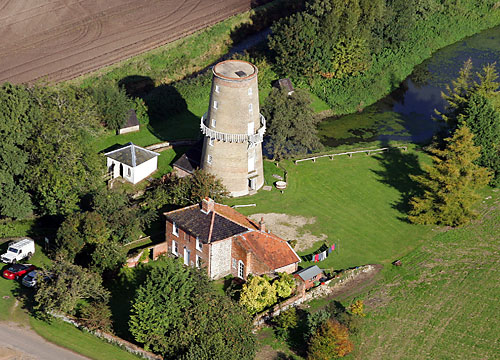 |
|
9th October 2008 |
Old ladies memories, so more about me than the Freestone family. Horace I didn't know, but I was sent to Little Cressingham as an evacuee with my sister aged 3, I was 9. We went to water end cottages across the common from the mill Walter Freestone and Jane his wife had two boys, Walter and Frank who still live in Watton. Mr freestone who we all called dad. worked at the big house as a gardener and worked at the mill grinding the grain. George his brother was married to Dora, she used to "sing pity you are such a scatterbrain," when I went in to the yard, Walter the son went into the RAF, she was older, they kept 4 goats, pigs, hens and ducks, we would roam the river Wissey looking for ducks eggs that laid away. When the sluice gates were opened eels and pike got stranded in the shallow water so catching them was easy. At Christmas we went up Into the granary and plucked the turkeys, they were kept outside the yard in a large fenced field full of horseradish, one year the river froze over and the whole village turned out to skate and even sat on chairs to be pushed about it was so thick. What a wonderful War I had, I didn't want to come back to London where our house had no walls only a tarpaulin, after 4 years I hardly knew my mother. When the doodlebugs started I was sent to high Wycombe in Buckinghamshire, when Walter the son came home from the RAF he moved to Aylsham, but he also had a son Chris, but I didn't know him, it was after I left. Doreen Viner (née Sansom) - 13th October 2018 |
My great-great-grandfather was Robert Chapman, miller and farmer, who lived in the mill house (as occupier, not owner) from 1841 to 1881 (except for a stint Great Cressingham where he appears in the 1851 census). Robert and his wife, Frances (nee Richardson), are buried in St. Andrew's churchyard up the hill from the Mill House. An interesting story from my first visit to Little Cressingham in November, 1970: I knocked on the door of the Mill House to ask permission to take a photo of the house, explaining that my great-great-grandfather had lived there. The occupants were Mr. and Mrs. Jack (Nellie) Arnold, and they invited me in. I told them about my grandmother's memories and the fact that her father, Eli Robert Chapman (son of the aforementioned Robert), had grown up in this house and became a miller in other villages (Great Cressingham, Earsham, Horkesley), ending up in Saham Toney in 1890. He inherited some money from his father in 1884, but he gambled and lost too much. One night in despair he went out on his horse and shot himself. His horse dragged him back to the mill house next morning, his foot caught in the stirrup. Even though this occurred at Saham Toney in 1890, Mr. and Mrs. Arnold -- in an adjacent village 80 years later -- knew that story! William W. (Bill) Josey, Maryland, USA - 7th March 2020 |
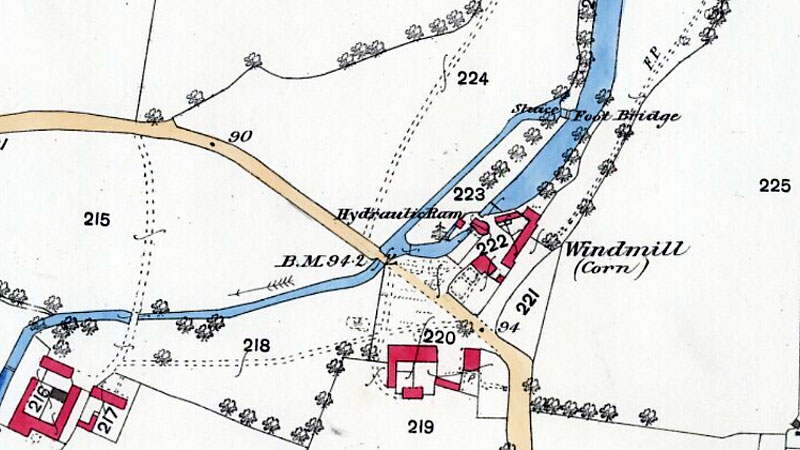 |
O. S. Map 1883 |
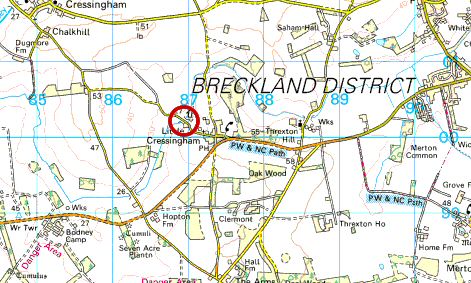 |
O.S. Map 2005 Image reproduced under licence from Ordnance Survey |
1780: Mill advertised for sale or let by William Trundle
White's 1845-1846 : John Marsh - wind & water |
If you have any memories, anecdotes or photos please let us know and we may be able to use them to update the site. By all means telephone 07836 675369 or
|
| Nat Grid Ref TF 86970021 | Copyright © Jonathan Neville 2003 |